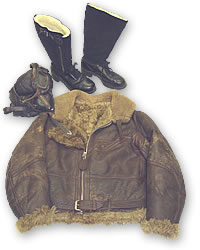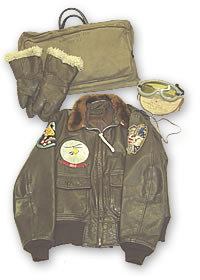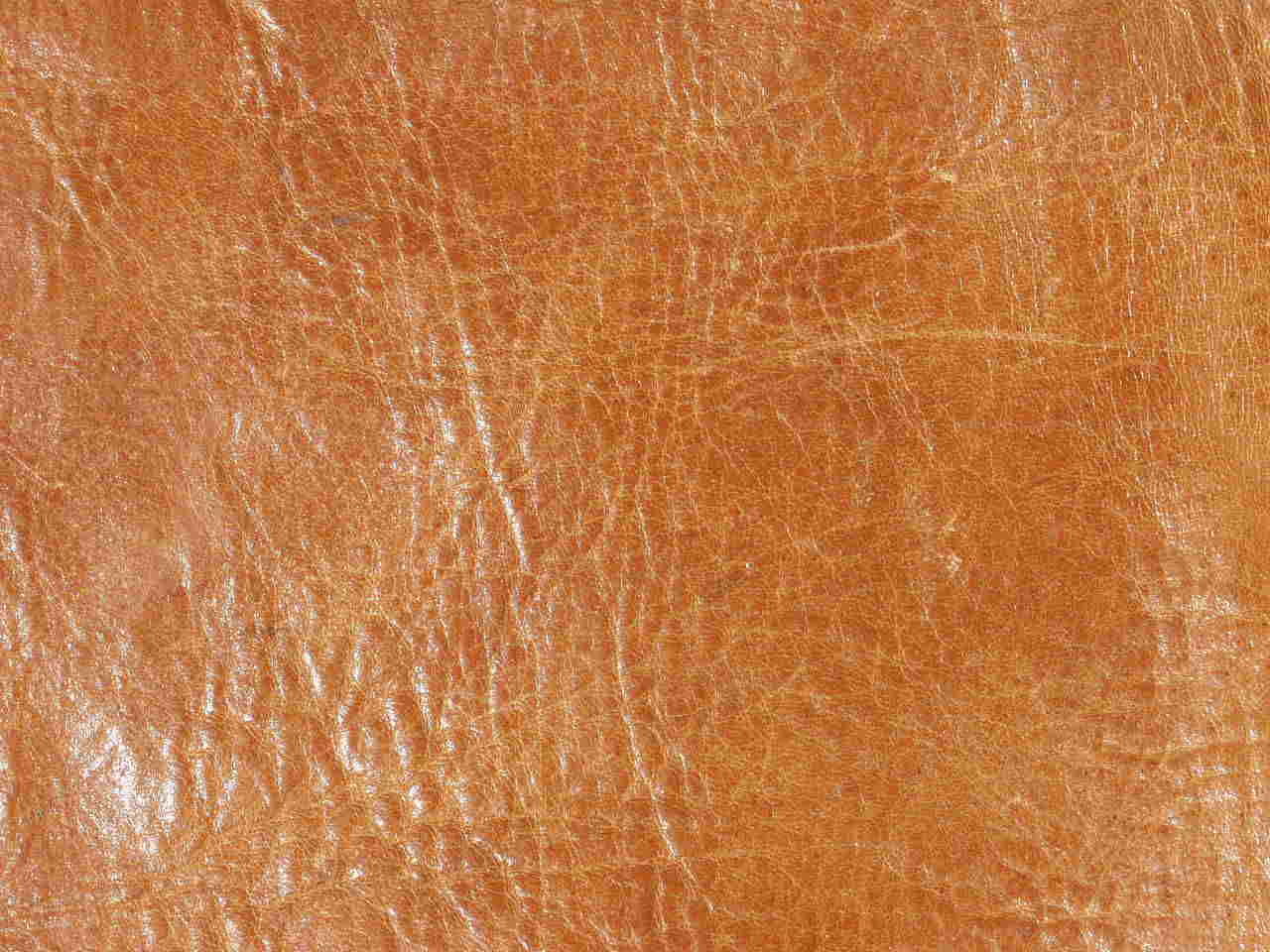Flying Jackets etc.
This page is a copy of a feature, written by Geoff Pringle, from our associated business www.oldnautibits.com
Leather Care for Vintage Leather
 Vintage leather is all too often left to die by uncaring or unknowing owners - this applies just as much to some museums, as to some private collectors. It is not always appreciated that regular conservation is required for an item to be stabilised and saved from the effects of the drying process.
Vintage leather is all too often left to die by uncaring or unknowing owners - this applies just as much to some museums, as to some private collectors. It is not always appreciated that regular conservation is required for an item to be stabilised and saved from the effects of the drying process.
The effect of neglect
Just last weekend we purchased a very original leather mounted wrist compass, dating from the early 1900's, of the type used by both the Army and the Royal Flying Corps in World War I. The leather was unbelievably dry and brittle. On trying to remove the wrist strap from the body of the compass (for inspection and conservation) part of the mounting simply crumbled away. Similarly, when recently in a well known "Battle of Britain" museum, here in Southern England, we spotted an original World War II Irvin Flying Jacket which had belonged to an illustrious fighter pilot - one of the "Few". We were shocked to see it mounted in an illuminated display cabinet where it was "cooking" under the lights and simply falling apart through lack of appropriate care.
How to avoid it
These incidents can now be avoided. Here in Europe, AntiqueLeatherDressing.co.uk are supplying a product which stabilises, feeds and protects most vintage leathers - and is equally beneficial when applied to more modern hides! Pecard Leather Care Products of Wisconsin, USA, is the originator and manufacturer of an Antique Leather Dressing "par excellence" (Pecard). Having been established since 1902, Pecard certainly know their business. Although they are a big name in their domestic marketplace, Pecard have only been known in Europe to a small number of people who are aware of their product and its superb performance.
 We count ourselves among this minority, as we have been using Pecard on vintage leather flight clothing for the past quarter of a century. The initial application of Pecard to a World War II B3 Flight Jacket (which was discovered in the attic of a house, where it had lain forgotten since 1945) was simply amazing. When we purchased the jacket it was brittle and dry, with the leather cracked and split. We applied Pecard, rubbing it well into the grain of the garment with a soft cloth, then left it in a cool, dry place until all the Pecard had been absorbed. We then repeated the exercise, effectively feeding the hide, and so restoring the original qualities of the animal's skin.
We count ourselves among this minority, as we have been using Pecard on vintage leather flight clothing for the past quarter of a century. The initial application of Pecard to a World War II B3 Flight Jacket (which was discovered in the attic of a house, where it had lain forgotten since 1945) was simply amazing. When we purchased the jacket it was brittle and dry, with the leather cracked and split. We applied Pecard, rubbing it well into the grain of the garment with a soft cloth, then left it in a cool, dry place until all the Pecard had been absorbed. We then repeated the exercise, effectively feeding the hide, and so restoring the original qualities of the animal's skin.
Pecard is not a miracle worker and cannot repair existing damage, in the form of tears or splits, but it does effectively prevent further deterioration. At the same time the dressing restores a depth of colour and patina akin to when the article was manufactured. By using Pecard, in the case of our B3 Flight Jacket (manufactured in the dark days of 1942), we have managed to preserve and enjoy it well into the 21st century.
The finish
 The resultant finish will largely depend on personal choice and the look required. Pecard can be applied and left to feed the leather naturally, in which case a matt finish is obtained. If a sheen is required, the treatment can be buffed off with a lint free cloth, or a soft shoe cleaning brush, which can result in the leather positively glowing. Re-treatment will depend on usage, storage and climatic conditions. At Oldnautibits we usually re-dress our vintage leather flying clothing every six months. If a garment is used or handled on a regular basis, the application should be more frequent. If the garment is starting to look dry or tired (in much the same way as a wax jacket), it could be time for another coat of Pecard.
The resultant finish will largely depend on personal choice and the look required. Pecard can be applied and left to feed the leather naturally, in which case a matt finish is obtained. If a sheen is required, the treatment can be buffed off with a lint free cloth, or a soft shoe cleaning brush, which can result in the leather positively glowing. Re-treatment will depend on usage, storage and climatic conditions. At Oldnautibits we usually re-dress our vintage leather flying clothing every six months. If a garment is used or handled on a regular basis, the application should be more frequent. If the garment is starting to look dry or tired (in much the same way as a wax jacket), it could be time for another coat of Pecard.
In summary
The variety of applications for Pecard is as wide as the market for collectable leathers. At Oldnautibits we have used Pecard on articles as diverse as a 17th century English Wine Carrier, the leather section of a 19th century Ship's "Bellows Fog Horn" and also on a wide variety of 20th century Leather Flying Clothing. Pecard is equally good at restoring leather riding gear, suitcases, gun slings, belts, hats, whips and, of course, a wide range of leather footwear.
The pictures on this page
-
RAF Escape Boots 1943 pattern, Stores Ref. 22C/917-924 - RAF B Type Flying Helmet, Stores Ref. 22C/65 - RAF Mark 111 Goggles, Stores Ref. 22C/69 - RAF "Irvin" Flying Jacket, Stores Ref. 22C/320.
-
USAAF Bombardier's Map Case Type E-1, USAAF Gunner's Gloves Type A-9, USAAF Polaroid All Purpose Flight Goggles and USN G-1 Flying Jacket Ref 55J14
-
English Leather Wine Flask, Brass Naval Telescope with leather binding, Shot Flask and Chassepot Sword bayonet.
Photographs of leather
www.oldnautibits.com
|
